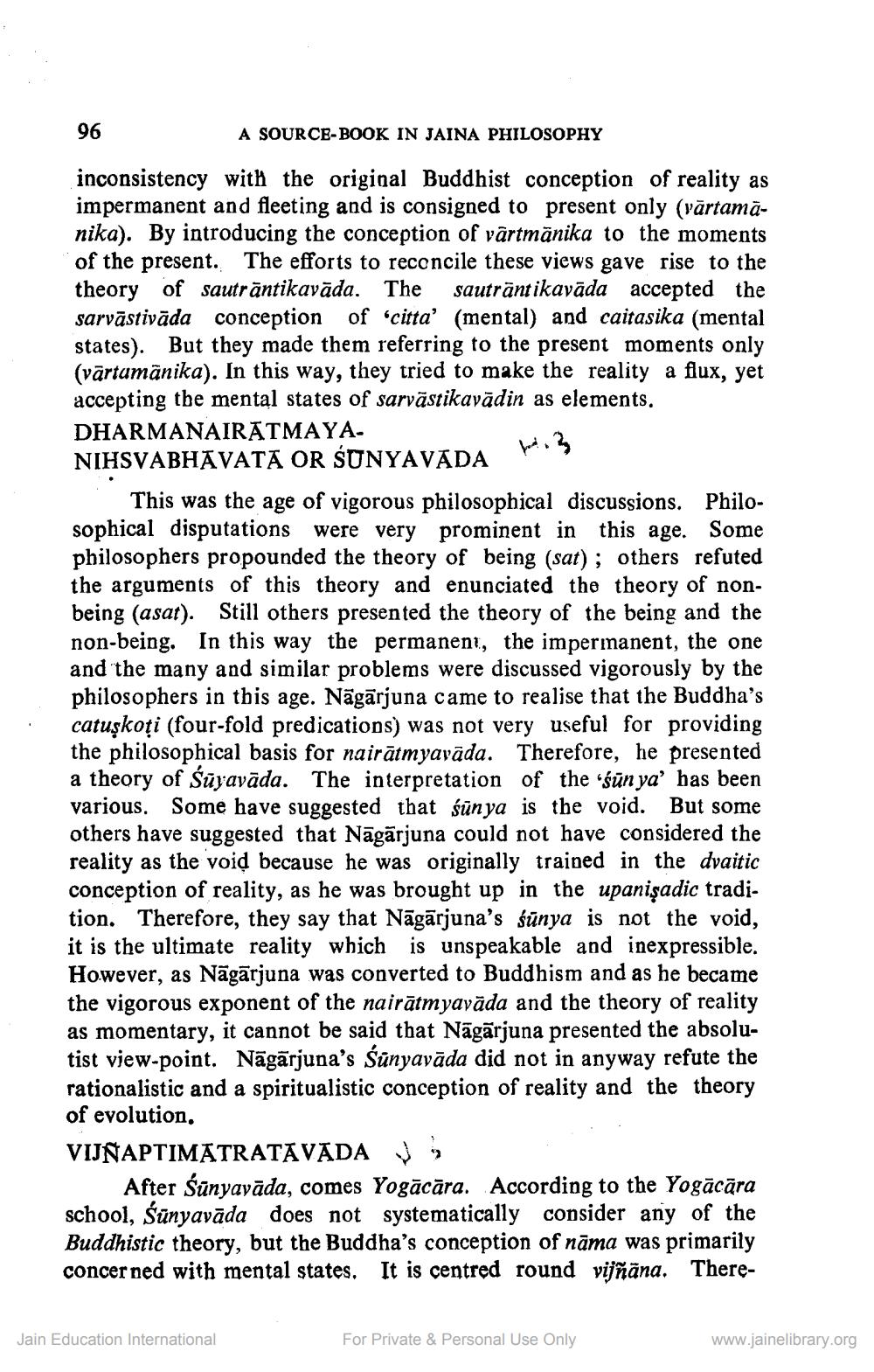________________
96
A SOURCE-BOOK IN JAINA PHILOSOPHY
inconsistency with the original Buddhist conception of reality as impermanent and fleeting and is consigned to present only (värtamānika). By introducing the conception of vārtmānika to the moments of the present. The efforts to reconcile these views gave rise to the theory of sautrāntikavāda. The sautrāntikavāda accepted the sarvāstivāda conception of "citta' (mental) and caitasika (mental states). But they made them referring to the present moments only (vārtumānika). In this way, they tried to make the reality a flux, yet accepting tbe mental states of sarvāstikavādin as elements. DHARMANAIRATMAYANIHSVABHAVATĀ OR ŠUNYAVADA I
This was the age of vigorous philosophical discussions. Philosophical disputations were very prominent in this age. Some philosophers propounded the theory of being (sat); others refuted the arguments of this theory and enunciated the theory of nonbeing (asar). Still others presented the theory of the being and the non-being. In this way the permanent, the imperinanent, the one and the many and similar problems were discussed vigorously by the philosophers in this age. Nāgārjuna came to realise that the Buddha's catuṣkoți (four-fold predications) was not very useful for providing the philosophical basis for nairātmyavāda. Therefore, he presented a theory of Śüyavāda. The interpretation of the ośün ya' has been various. Some have suggested that śünya is the void. But some others have suggested that Nāgārjuna could not have considered the reality as the void because he was originally trained in the dvaitic conception of reality, as he was brought up in the upanişadic tradition. Therefore, they say that Nāgārjuna's šūnya is not the void, it is the ultimate reality which is unspeakable and inexpressible. However, as Nāgārjuna was converted to Buddhism and as he became the vigorous exponent of the nairātmyavāda and the theory of reality as momentary, it cannot be said that Nāgārjuna presented the absolutist view-point. Nāgārjuna's Śünyavāda did not in anyway refute the rationalistic and a spiritualistic conception of reality and the theory of evolution. VIJNAPTIMATRATAVĀDA V
After śünyavāda, comes Yogācāra. According to the Yogācāra school, Śünyavāda does not systematically consider any of the Buddhistic theory, but the Buddha's conception of nāma was primarily concerned with mental states. It is centred round vijñāna. There
Jain Education International
For Private & Personal Use Only
www.jainelibrary.org




